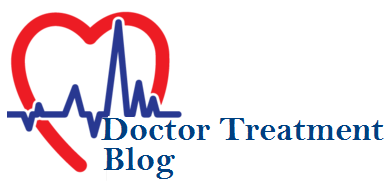The global healthcare industry relies heavily on the efficient and safe shipping of medical supplies. Whether it’s pharmaceuticals, medical equipment, vaccines, or other critical supplies, ensuring their safe and timely delivery is essential to providing quality healthcare services. Shipping medical supplies comes with its unique challenges, including strict regulations and the need for proper handling to maintain product integrity. Here, we will discuss five essential tips to help you ensure the safe shipping of medical supplies.
1. Understand Regulatory Requirements
Shipping medical supplies involves compliance with a myriad of regulations and guidelines set by various international, national, and local authorities. It is crucial to thoroughly understand and comply with these regulations to avoid legal issues and maintain product quality. Common regulatory bodies include the Food and Drug Administration (FDA) in the United States and the European Medicines Agency (EMA) in Europe.
2. Key considerations include:
- Temperature control: Many medical supplies, such as vaccines and pharmaceuticals, are temperature-sensitive. Ensure that the shipping process adheres to strict temperature controls to prevent product degradation.
- Documentation: Proper documentation is essential to demonstrate compliance with regulations. Maintain accurate records of shipping conditions, handling procedures, and any deviations from the standard process.
- Packaging: Use packaging materials that meet regulatory requirements for the specific medical supplies you are shipping. Ensure that the packaging protects against contamination, damage, and temperature fluctuations.
3. Choose the Right Shipping Partners
Selecting the right shipping partners is critical to the safe transportation of medical supplies. Consider partnering with logistics companies that specialize in healthcare logistics and have experience handling medical products. These partners should have a strong track record of compliance with industry regulations and a commitment to quality control.
Additionally, assess the shipping company’s capabilities to meet your specific needs, such as temperature-controlled transportation, secure storage, and real-time tracking. Reliable partners can help you navigate the complex logistics of medical supply shipping more effectively. Visit https://www.shiply.com/ to find the complete shipping solution.
4. Implement Quality Control Measures
Quality control measures are essential to maintaining the integrity of medical supplies during shipping. Implement stringent quality control processes throughout the supply chain, including:
- Inspection: Regularly inspect medical supplies before packaging to ensure they meet quality standards and are free from defects.
- Temperature monitoring: Use temperature monitoring devices to track and record temperature fluctuations during transit, particularly for temperature-sensitive products.
- Handling procedures: Train personnel on proper handling procedures to prevent damage or contamination of medical supplies.
- Secure storage: Ensure that medical supplies are stored in secure facilities that meet regulatory requirements for temperature and security.
5. Utilize Advanced Tracking and Monitoring
Real-time tracking and monitoring technologies are invaluable tools for ensuring the safe shipping of medical supplies. Implement tracking systems that provide visibility into the location and condition of shipments throughout the entire journey. These systems can alert you to any deviations from specified conditions, such as temperature fluctuations or delays, allowing you to take corrective action promptly.
Additionally, consider using IoT (Internet of Things) devices that provide real-time data on factors like temperature, humidity, and shock levels, giving you greater control over the shipping process.
5. Plan for Contingencies
Despite meticulous planning, unforeseen events can disrupt the shipping of medical supplies. It’s crucial to have contingency plans in place to address potential challenges. These plans should include:
- Emergency response procedures: Develop clear protocols for responding to emergencies such as temperature excursions, accidents, or delays.
- Alternative transportation options: Identify alternative transportation methods or routes in case of disruptions to the primary shipping plan.
- Communication protocols: Establish communication channels to keep all stakeholders informed of any issues and their resolution.
Conclusion:
The safe shipping of medical supplies is a critical component of the healthcare supply chain. By understanding and complying with regulations, partnering with reliable logistics providers, implementing quality control measures, utilizing advanced tracking technologies, and planning for contingencies, you can ensure the safe and timely delivery of essential medical supplies. These practices not only protect the integrity of medical products but also contribute to the overall well-being of patients and healthcare systems worldwide.

